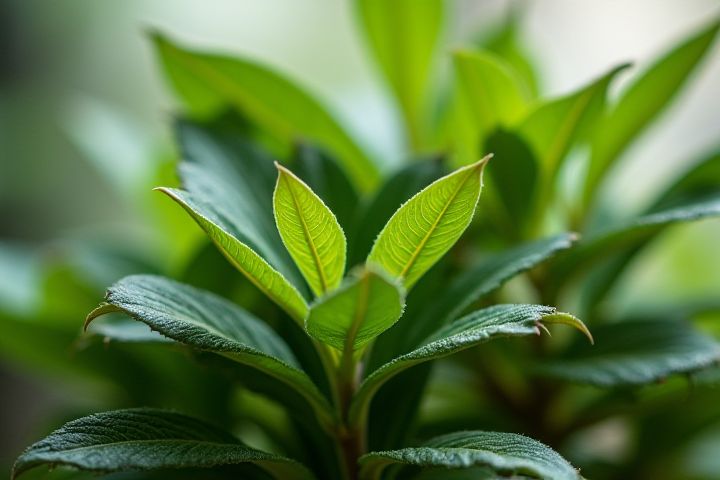
House plants often die due to improper watering practices, such as overwatering or underwatering, which disrupts their essential moisture balance. Insufficient light exposure can lead to weak growth and eventual decline, as most plants need specific light conditions to thrive. Pests and diseases, including root rot or fungal infections, can also compromise plant health if not promptly addressed. Nutrient deficiencies arise when the soil lacks the necessary minerals, causing poor growth and yellowing leaves. To ensure your plants flourish, regularly assess their environment and adjust care routines according to their specific needs.
Why House Plants Die
Overwatering
Overwatering is one of the leading causes of house plant death, accounting for approximately 50% of plant care issues. When excess water saturates the soil, it deprives roots of oxygen, resulting in root rot, which can spread rapidly and destroy the plant. Signs of overwatering include yellowing leaves, mushy stems, and a sour smell emanating from the soil, indicating decay. To prevent this, ensure your pots have drainage holes and allow the top inch of soil to dry out before watering again, safeguarding your greenery's health.
Underwatering
Underwatering is a primary reason why house plants can die, as it deprives them of the essential moisture needed for photosynthesis and nutrient absorption. Soil moisture levels should ideally remain between 20% to 40% for optimal growth; anything lower can stress the plant. Symptoms of underwatering include wilting leaves, dry soil, and stunted growth, making it crucial for you to regularly check soil moisture. A consistent watering routine, tailored to the specific needs of each plant species, can help prevent the adverse effects of underwatering.
Poor drainage
Poor drainage is a leading cause of house plant death, as it can lead to waterlogged soil, depriving roots of essential oxygen. When excess water accumulates, it creates an anaerobic environment that fosters root rot, where roots become mushy and brown, affecting their ability to absorb nutrients. To prevent this, ensure pots have drainage holes and use well-draining soil that allows excess water to escape. Monitoring your watering habits and adjusting based on the plant's needs will further safeguard against moisture-related issues.
Inadequate light
Inadequate light is a primary factor contributing to the decline of houseplants, as most species require a specific intensity and duration of light for optimal growth. For instance, many popular indoor plants, such as pothos and snake plants, thrive in bright, indirect light; insufficient illumination can lead to symptoms like yellowing leaves, leggy growth, or even plant death. It's essential to consider the light requirements of your plants by assessing their placement in relation to windows and other natural light sources. A simple solution often involves relocating your houseplants closer to windows or utilizing grow lights to fulfill their lighting needs.
Temperature extremes
Extreme temperature fluctuations can significantly impact the health of houseplants, leading to wilting or even death. Many common houseplants thrive in temperatures ranging between 60degF and 75degF (15degC to 24degC); exposure to temperatures below 50degF (10degC) or above 85degF (29degC) can cause stress and hinder growth. Rapid temperature changes, such as moving plants from a warm indoors to a chilly outside environment, may shock the plants and cause them to drop leaves. Furthermore, localized heat sources, like radiators or direct sunlight through glass, can create microclimates that further exacerbate the negative effects of temperature extremes.
Low humidity
Low humidity can significantly impact the health of house plants, causing issues such as leaf drop and stunted growth. Many tropical plants thrive in environments with humidity levels above 40%, and when humidity falls below this threshold, they struggle to retain moisture. Without adequate humidity, transpiration decreases, leading to inadequate nutrient uptake and potential root damage. To mitigate these effects, consider using a humidifier or placing plants on a pebble tray filled with water to create a more suitable microclimate.
Pests and diseases
Pests and diseases significantly contribute to house plant decline, with common culprits including aphids, spider mites, and root rot. Studies show that around 30% of house plants are affected by these issues, leading to stunted growth and wilting. Early detection is key; yellowing leaves may indicate a pest infestation, while soft or blackened roots often point to fungal infections. To protect your plants, regularly inspect foliage and soil, and consider using organic pesticides or disease-resistant varieties.
Poor soil quality
Poor soil quality significantly contributes to the decline of house plants, as it can hinder their ability to absorb essential nutrients and water. Inadequate drainage, compaction, and a lack of organic matter can create a hostile environment for root development, leading to stunted growth or root rot. For optimal health, use potting mixes with a balanced composition of peat, perlite, and vermiculite, which improve aeration and moisture retention while facilitating nutrient uptake. Regularly testing soil pH and nutrient levels ensures that your plants thrive, with the ideal pH range typically falling between 6.0 and 7.0 for most house plants.
Nutrient deficiency
Houseplants often die due to nutrient deficiency, primarily a lack of essential elements such as nitrogen, phosphorus, and potassium. Nitrogen is crucial for healthy leaf growth and a vibrant green color; its deficiency leads to yellowing leaves and stunted growth. Phosphorus plays a key role in root development and flowering, and a shortage can result in poor root systems and fewer blooms. Regularly testing your soil and using a balanced fertilizer can prevent these deficiencies, ensuring your plants thrive and flourish.
Wrong pot size
Choosing the wrong pot size can significantly impact the health of houseplants. A pot that is too small restricts root growth, leading to root bound conditions, while an oversized pot can hold excess moisture, causing root rot. Both scenarios can stress the plant, resulting in wilting leaves and stunted growth. To promote robust plant health, select a pot that offers enough room for growth, allowing for proper drainage and aeration.
